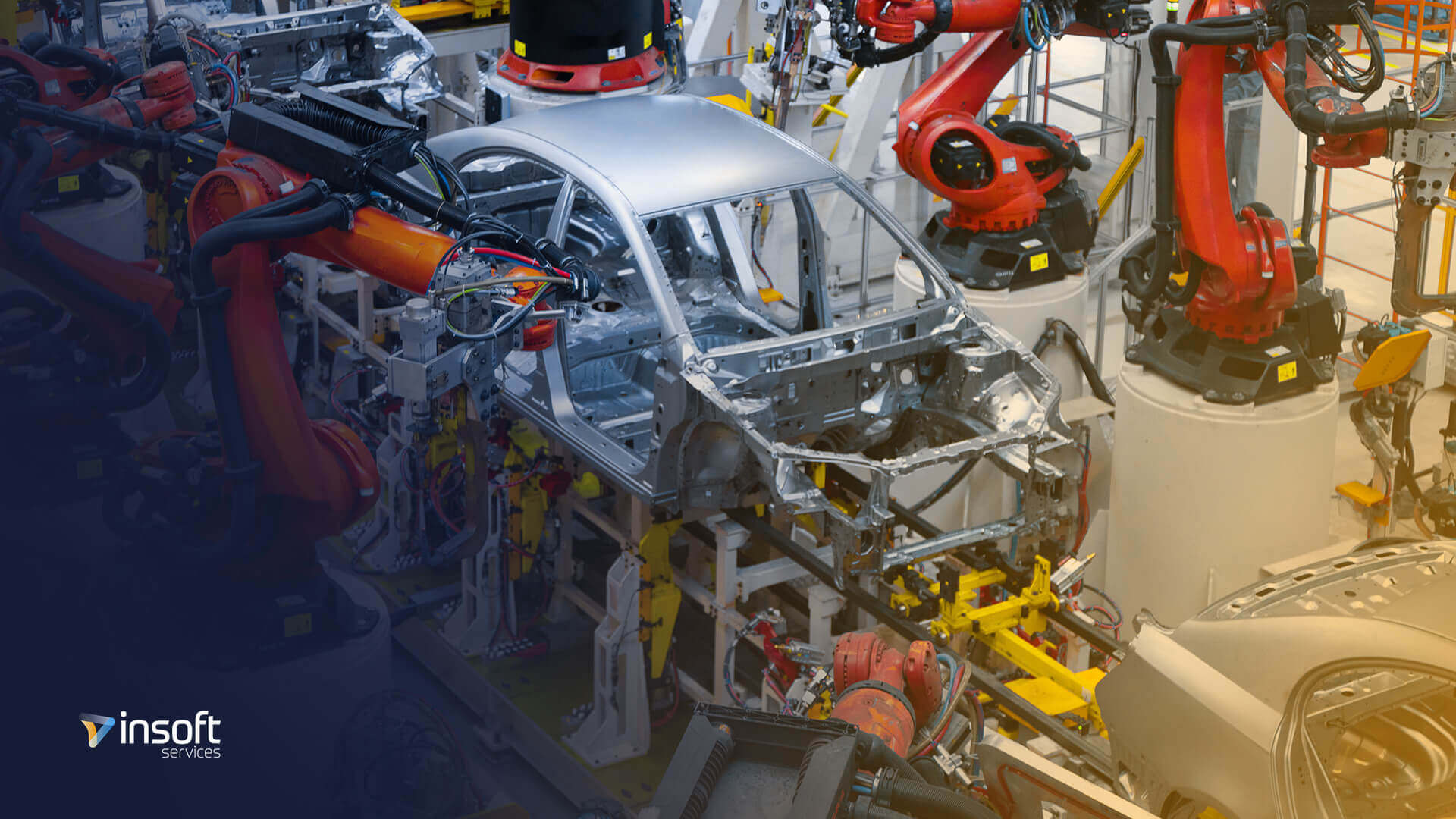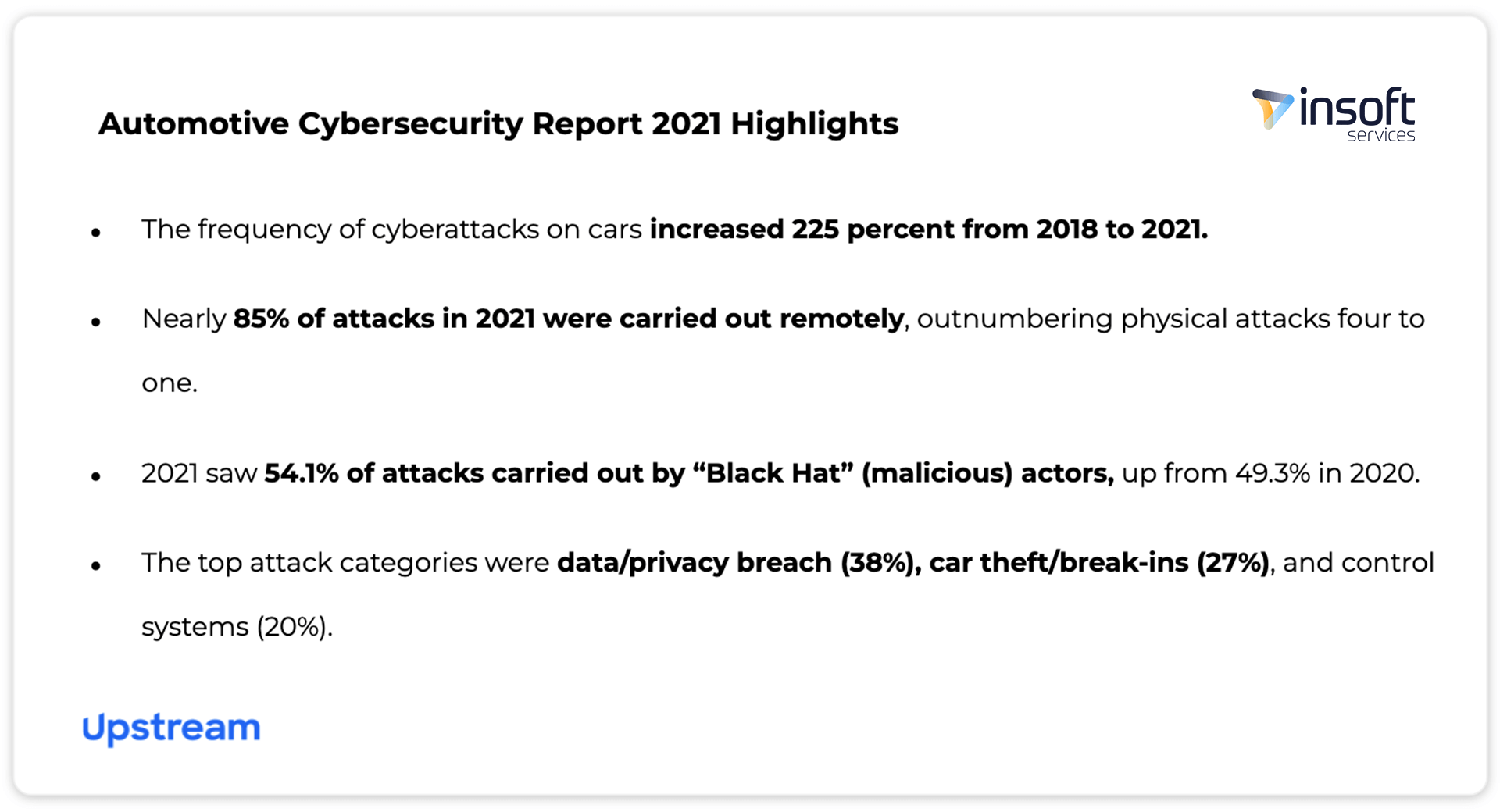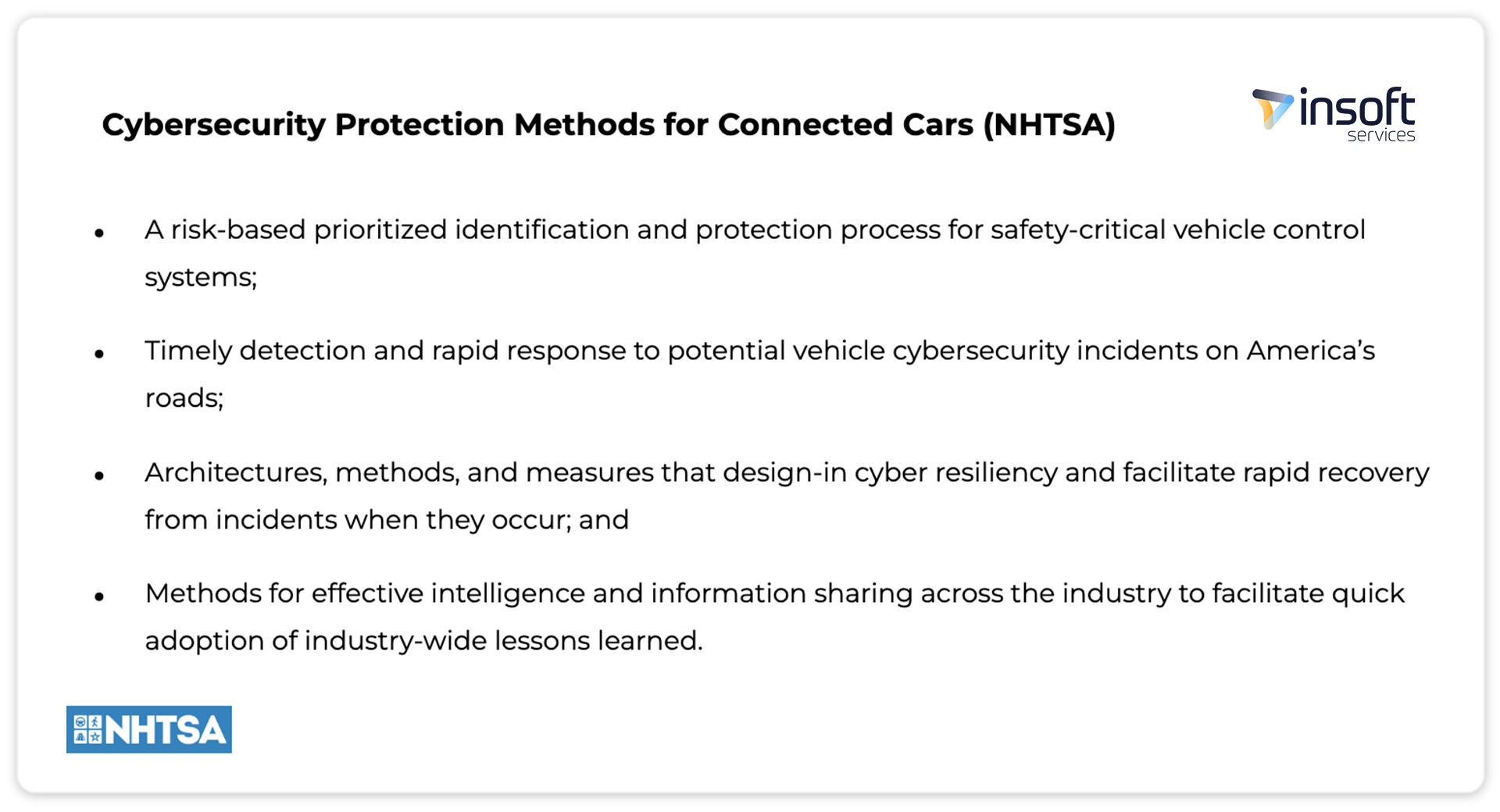The Fast-Rising Threats in Automotive Cyber Security
Information technology is becoming more and more pervasive in our daily lives, and we depend on several different IT systems on a day to day basis. As a result, we see a rise in the likelihood of attacks against such systems and their vulnerabilities. The need to safeguard these systems and the data they contain gave rise to cybersecurity. Cybersecurity is even more crucial when it comes to automobiles because safety-related systems and components need to be shielded against crippling attacks, data leakage, sabotage, and other potential disruptions.

In 2015, two security researchers shook the automotive industry to the core. They demonstrated how it was possible for cyber attackers to take control of a Jeep Cherokee remotely by simply hacking into its entertainment system that was linked to mobile data. Fiat had to recall around 1.4M cars after this expose.
The automotive sector is facing a major shift: As internet connectivity spreads, there is a greater chance that privacy and even safety will be violated. As more manufacturers enter the autonomy space, the security dangers that emerge grow increasingly more difficult to comprehend. Automakers might lose up to $1.1 billion in a single strike, according to several studies. Before 2023, the entire automotive industry is predicted to suffer losses of up to $24 billion.
According to Upstream, there were 330 million connected automobiles in 2018. This figure is expected to rise to 775 million by 2023. By 2025, a connected car will generate approximately 25 GB of data each hour. That figure rises to 500 GB per hour for a fully autonomous car.
Here are the highlights from Upstream’s 4th annual Cybersecurity report:

Techniques used by hackers to gain access
As per the Upstream report, hackers use these eight common methods to gain access of a vehicle’s internal system:
- Spoofing communication integrated in the automobile
- Changing the internal code of the vehicle.
- Sending malicious messages via the vehicle’s communication and entertainment system.
- Exploiting flaws in sensitive data access in some automobiles.
- Denial-of-service (DoS) assaults cause the vehicle to malfunction.
- Taking advantage of privileged access.
- Virus embedding in communication media.
- Sending malicious communication that can be received by an automobile as well as a connected phone or home computer.
How to prevent automotive cyber attacks
With today’s automotive connectivity revolution and the exponential growth in the number of connected vehicles on the road, the automotive sector must comprehend, foresee, and combat escalating cybersecurity threats. Here are some of the protection and prevention methods for connected vehicles, put forth by the National Highway Traffic Safety Administration (NHTSA):

The creation of Auto-ISAC, a business ecosystem that places a strong emphasis on cybersecurity awareness and cooperation across the automobile industry, was also pushed by NHTSA.
A connected car apparently has more lines of code than an F-35 fighter, a Boeing 787, or even a NASA space shuttle, according to Upstream research. A multilayered, end-to-end cyber security architecture that covers all networks, endpoint and mobile devices, and the cloud would be the key to effective automotive cyber defense. This won’t be easy, and it definitely won’t be cheap, but it will enable us to stay safe on the road.
More blogs for you:

 Finland
Finland Germany
Germany Denmark
Denmark Sweden
Sweden Italy
Italy Netherlands
Netherlands Norway
Norway 




























No Comments